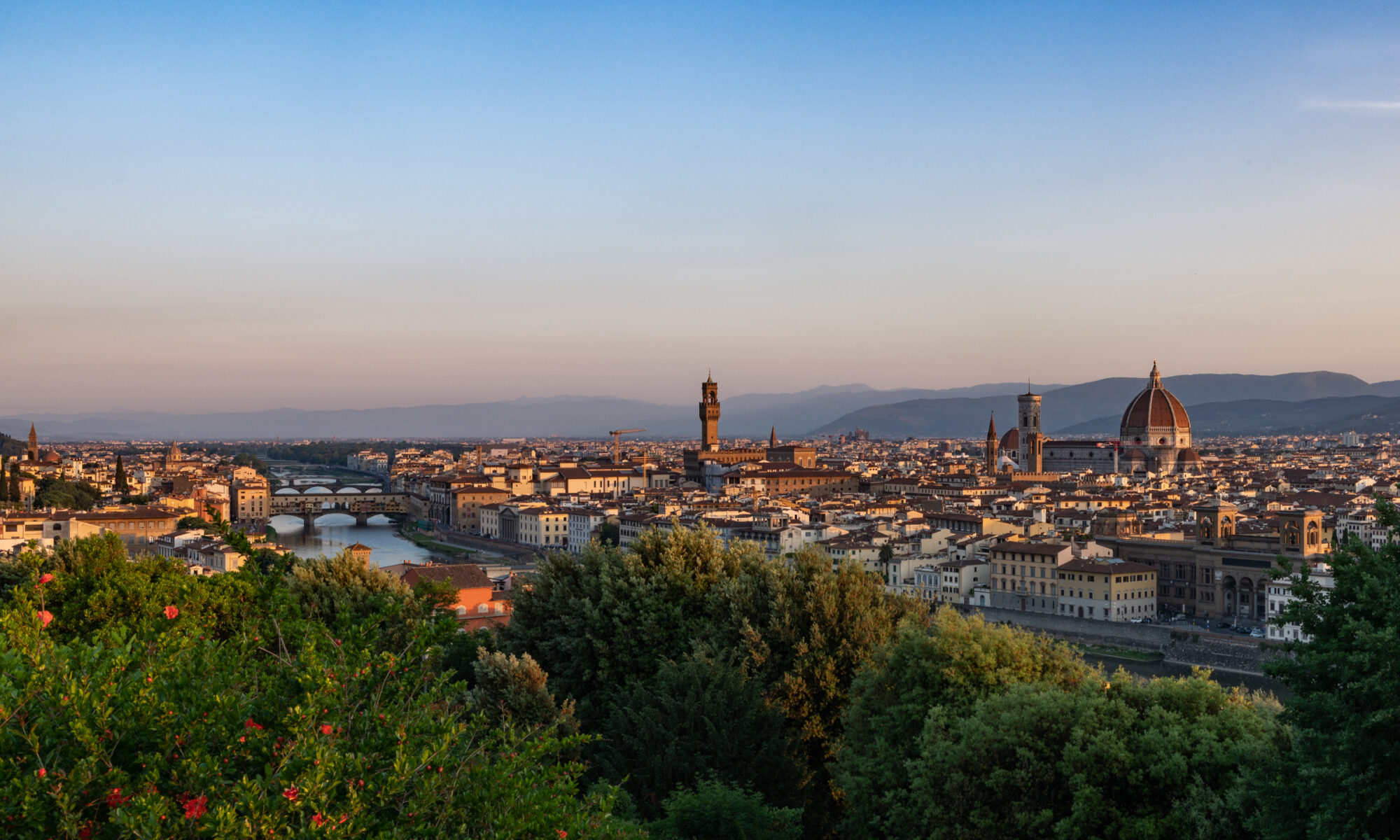Oh, Florence – the pure mentioning of the name evokes the idea of heavenly beauty. Built from Pietra Serena, the local blue sand-stone, the city cradled in the soft golden hills of Tuscany, bore Petrarch’s sonnets of ideal love. It was here, in Florence, that Botticelli turned the boundless joys of Spring divine, that Leonardo drew the first sketches of an impossibly mesmerizing smile, and where Michelangelo bestowed his marble-skinned David with eternal youth. Florence is where art transcended cold Earthly matter and rose to divine beauty.
The city is the birthplace of the Renaissance, the artistic expression of humanism, the novel philosophical idea which rose in the 14th century and shaped modern thinking. The rediscovery of ancient classical texts, especially the writings of Plato and Vergil, which focused on the study of humanity and its place it the natural world, brought about new writings, new art, replacing medieval superstition with scientific research, challenging religious authorities. Man was the measure of all things. The tight corsage Catholicism was not shaken off, but loosened. It was a liberation.
Where before ascetic life and self-restraint promised the return to the Garden of Eden, it was now the perfection of beauty: a stylized, spotless beauty that symbolized moral superiority and intactness. Where before bodies were chastised to float heavenwards, angels now lost their wings but were given immaculate bodies. Voluptuous lips were curling in unblemished faces, graceful nudes were revealed when heavenly breezes lifted flowery dresses, and flowing hair replaced golden halos. Beauty was transcendental.
Yet, like the city-state’s powerful gold ducate, the Florin, this beauty was two-faced. Firstly, only the rich elite had access to the writings of Plato and Virgil and hence would understand the allegories and allusions in the paintings. The poor remained stuck in a rigid, medieval mind-set. Secondly, behind the moneys that paid for all the art produced in the city fiorentina, stood the name of one dynasty known for its lavish patronage of the beaux arts: the Medici. With the help of the best artists of their time, they turned the democratic Republic of Florence into a dictatorship that lasted for 300 years.
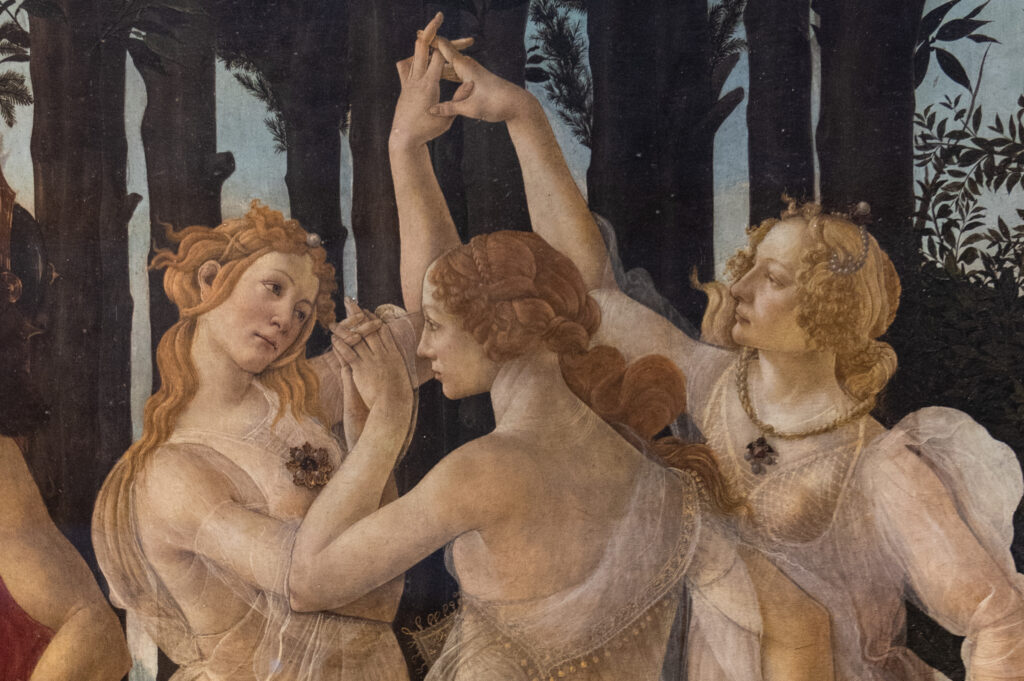
In the 14th century, with a population of 90,000, Florence was one of the biggest cities of Europe and due to a flourishing wool and banking industry one of the wealthiest. In 1293, in an attempt to save the city from dictatorship, a constitution was implemented that barred nobility and labourers from political power. Trades and crafts smoothly replaced aristocracy. Nine representatives of the guilds, the trade- and craftsmen-associations, made up the government, the so-called Signoria, which was elected every two months. The downside of this early, institutionalized republic was instability, with frequent feuds between wealthy families. Shakespeare’s ficticious Capulets and Montagues, especially the rash and hot-blooded Tybalts, were very much a reality in Florence.
The Florentines were used to high levels of violence, and death came fast. There was the gruesome reality of easily dealt public executions, hangings or bonfires at the Piazza della Signoria. There was the merciless Black Death that turned the labourers of the poor quarters into nameless, stinking, black-spotted corpses. There were gory flagellation processions thronging the cobblestoned streets which, if more theatrical than real, inspired the city dwellers’ nightmares, as did the frescoes inside the gothic churches, which depicted the hitherto unimaginably gruesome fate of the sinners. And there was the blood that kept running from the gaping wounds of the many crucified Jesuses.
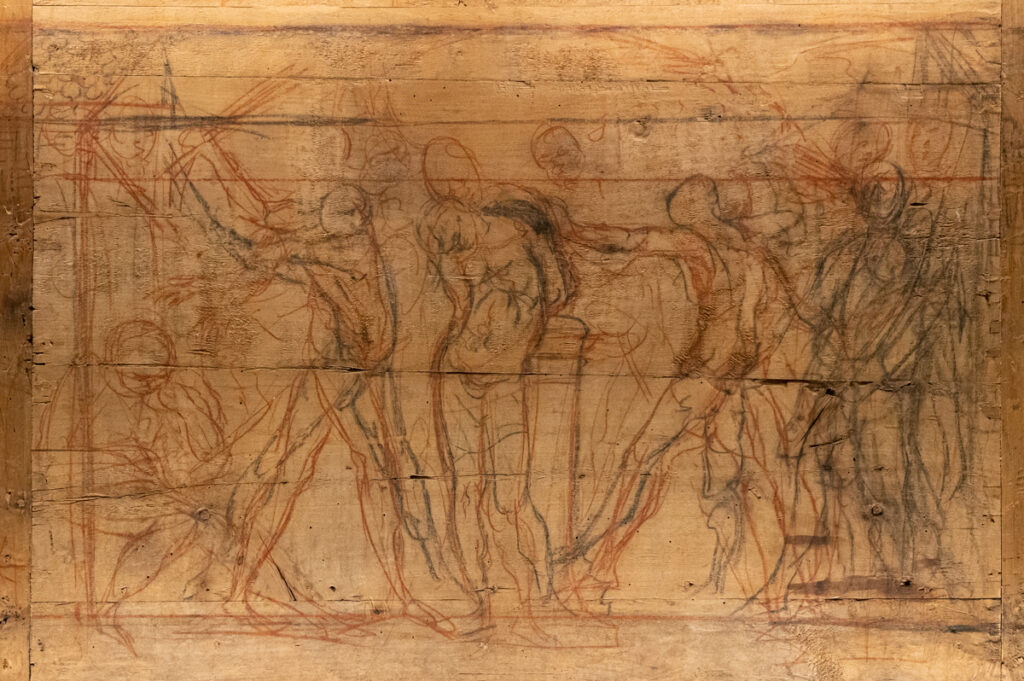
The Medici were one such bellicose Florentine family, shrewd bankers with a long standing reputation of violence and cold-bloodedness. After a notorious and bloody strife between supporters of the Pope vs. supporters of the Holy Roman Emperor, which left a power vacuum in Florence, the Medici were swept up to the highest echelons. Giovanni Di Bicci de Medici, the founder of the Medici bank, became the Pope’s banker, responsible for collecting church taxes all over Europe, a risky, but well remunerated business. Giovanni di Bicci invested his gains in currency exchanges and trade of especially wool and alum and set up semi-independent offices all over Europe, hence creating the world’s first holding. The Medici became unfathomably rich.
Greed appears to have been written into the Medici DNA. Gout, or a similar metabolic decease linked to over-eating ran in the family genes. The chronic joint inflammation it caused made their lives painful and short. Maybe this was the reason for their haste, their hunger, their hubris.
The Medici would not only become known for their wealth and unscrupulousness, but for their collections of art that to this day fill the Uffizi in Florence, hang in their palazzi, chapels, and churches, their collections of old scriptures and coins and relics of saints in golden and silver vases that now fill the museums to the brim. There seemed to be no end to what their money could buy. They had lovers and slaves, sycophants and mercenary armies. They had private teachers and fencing instructors. They arranged marriages and sponsored (and consequently won) tournaments and wars. They paid poets and painters and architects. But despite all, they were and remained through the generations to come, coarse-featured, disjointed, and – plainly ugly.
The Medici were in fact so ugly they posed a great challenge to their portraitists, who were after all the best of their time: Verocchio, Donatello, or Botticelli were pressed to flatter. In Bronzino’s portrait, Giovanno di Medici’s eyes are misaligned, and Cosimo’s fingers are crooked in Jacobo’s painting, and even in the hands of the great Verrochio, the masters’s teacher, Lorenzo’s nose is warped, his mouth frog-like, his eyes disappear under bushy ridges of eyebrows. The idealization of truth, the beautification of reality, that’s as far as it went when it came to the Medici in person.
But if their intentions weren’t good, at least the Medici had a bad conscience. Usury – the commercial lending of money with interest, as is standard procedure in business nowadays, was considered heresy by the Catholic Church. In the eyes of the popes (three at the time) it was unnatural, against God, as an income had to stem from one’s own doing, from blood, sweat, and tears. The multiplication of things was best left to Jesus. But more importantly, a loan offered social mobility. This was a breech of the God-given stationary order of society, the hierarchy of rich over poor, of feudal lords over serfs.
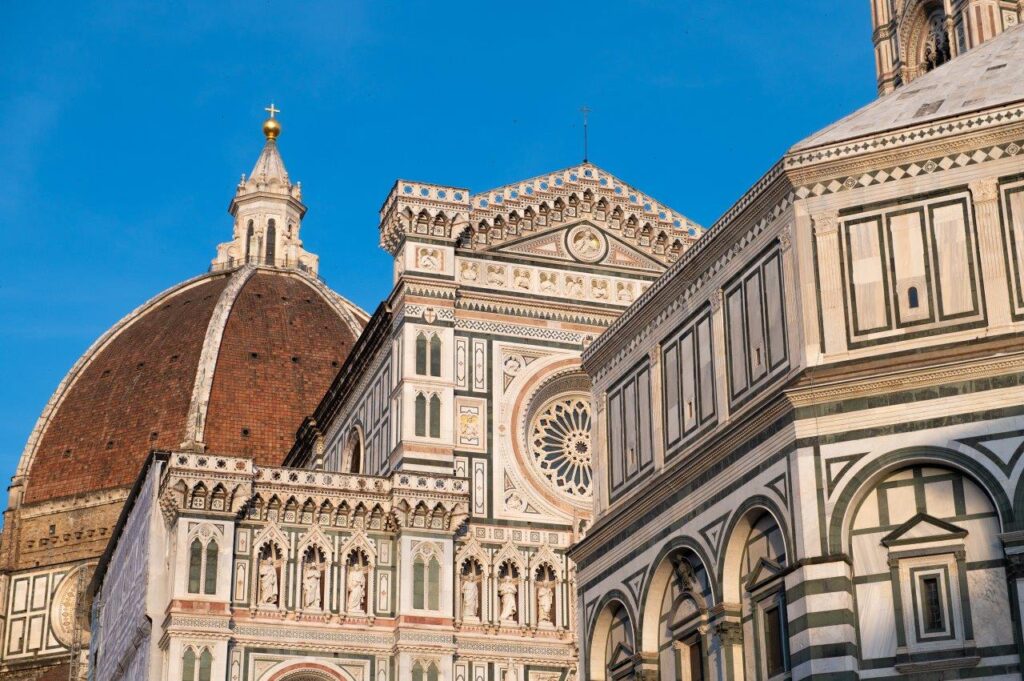
Hence, to disguise their unholy business, bankers turned into traders and currency exchangers. They hauled money back and forth all through Europe, on galleys overseas, on horseback overland, on foot over the Alps. But still, the stain of heresy, and the fear of God’s punishment remained: heresy was a sin worse than sin worse than owning a slave, or killing a slave, worse than adultery and lust. A sinner was to be burnt at the stake and hence in hell, eternally.
To repent, the Medici invested some more: in art. They had themselves painted kneeling in front of the Virgin Mary, in front of this or that Saint, ascending to heaven even to demonstrate their piety. Art was their ticket to paradise.
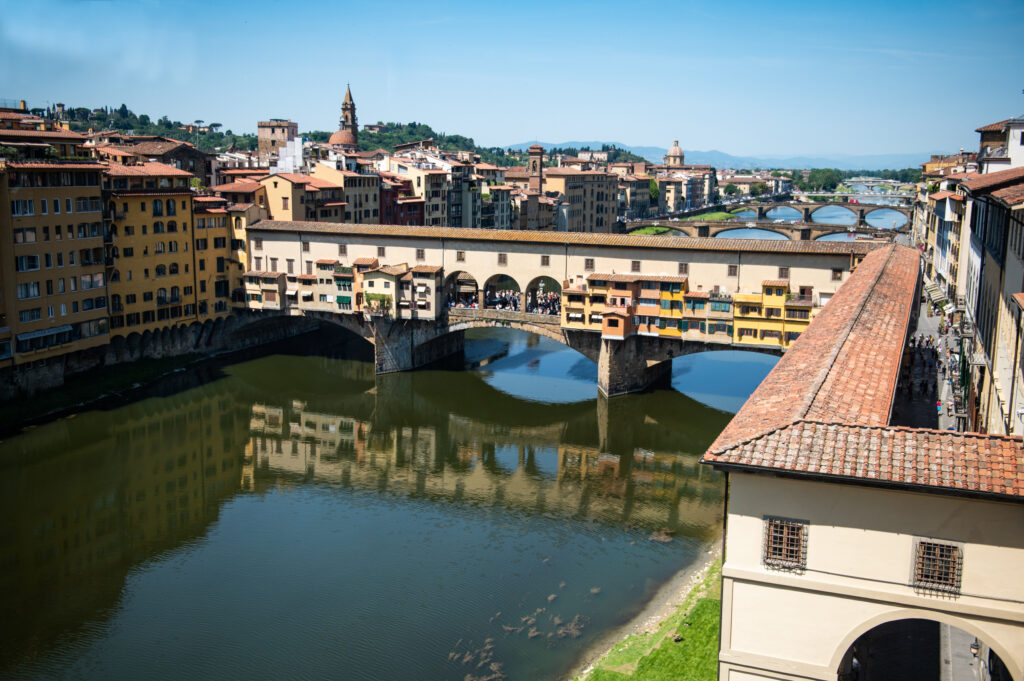
In a city like Florence, where by the constitution business and politics were inseparably entwined, it was only a matter of time until the Medici upped their game into politics. Richer than Florence, they rose to power by lending to the city state, which, entangled in ongoing warfare with competing city states like Venice and Milan, was in dire need of funds. Soon, in 1434, after a little bribing here, a little rigging of the ballots there, Cosimo di Medici, son of Giovanni di Bicci, was elected head of state. He had political opponents executed and installed an oligarchy with hereditary rights. Cosimo di Medici matter-of-factly ended the democratic republic, but still the people loved him, so much that after his death they named him Pater Patriae – the father of the nation.
Despite his wealth and ambitiousness, he styled himself as one of the people, an equal among many, while acting in the background like a Mafia Don. He commissioned his close friend, Donatello, the greatest sculptor of his time, to create a bronze David, the symbol of the have-nots with whom God sides. The statue was the first free standing nude since the days of the Romans. The naked boy, caught mid movement appears lost to thoughts, was so moving, so touching, so innocent. Who could possibly resist?
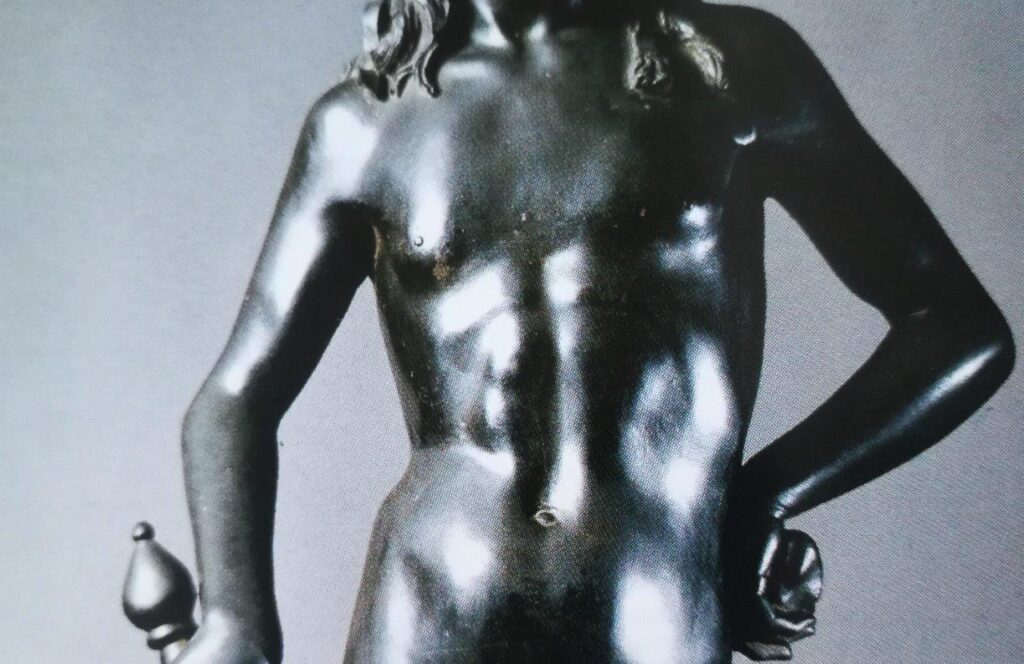
Cosimo was in fact a good banker, politician, and patron of arts. In 1454 he had brokered the treaty of Lodi, which granted peace and prosperity to the entire Italian peninsula. Under his rule, Florence kept thriving, the Medici bank kept making sheer ungraspable amounts of money and, most importantly, he showered the city with art. Only Cosimo’s gout-ridden body kept faltering, he died early. Looking back on his life, Cosimo reportedly said: “For fifty years I have done nothing but make money and spend money, and I have realized it is much sweeter to spend it than to earn it.”
His son Piero, who followed Cosimo as leader, was so hard-stricken by the disease he had to be carried around in a sedan chair. He died early, nicknamed Piero The Gouty, too early to leave his mark in history. Unlike his son, Lorenzo, who would use his forty years to turn himself into a legend, named Lorenzo Il Magnifico.
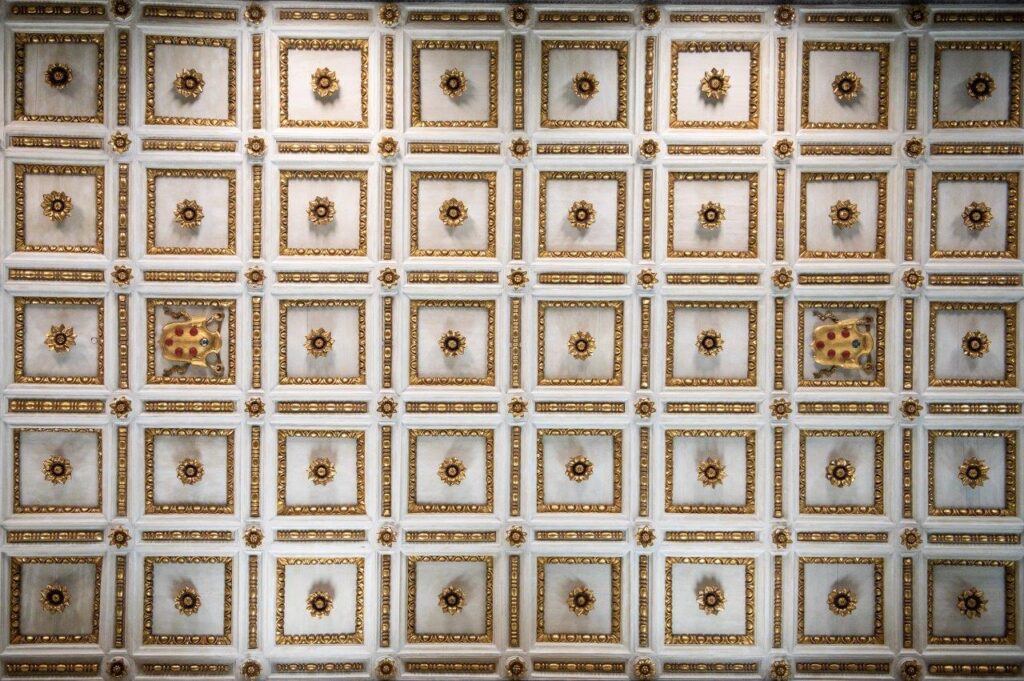
Following the ideals of the renaissance, young Lorenzo was not apprenticed in the bank like his father and grandfather, but studied Latin, philosophy and arts with a private teacher. He was instructed in the arts of duelling, horse riding, and falconry, but he was most passionate for poetry. To this day he is regarded one of the main Italian poets of the 15th century.
Despite being promised and later married to a Roman noble woman, who bore him four children, he wrote love poems in the style of Petrarch to his teen sweat heart Lucrezia Donati. Spectacularly ugly like his forefathers, Lorenzo kept searching for beauty in Lucrezia’s graceful appearance. This Platonic veneration of a beautiful woman was part of the humanist philosophy, comparable to praying, as the contemplating of beauty was regarded a way to come closer to God.
“Whoever seeks the true definition of love, will find that it consists in the desire for beauty. This being so, whatever is ugly repels him who truly and worthily loves. The beauty of the countenance and soul of our beloved one impels us to seek beauty in other things; to rise to that virtue which is beauty on earth as in heaven, and to reach at length the highest beauty—the Divinity, our final goal and resting-place.”
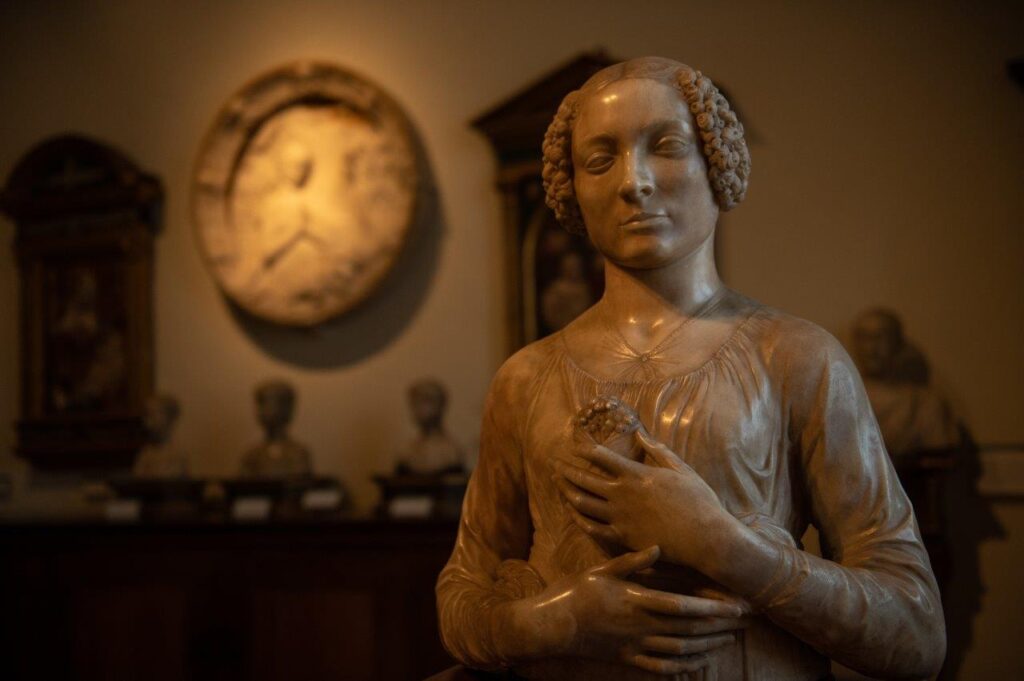
While Lorenzo had to outsource beauty for obvious reasons, he very well stilled his fleshly desires in real life. His “secret” trysts were well known, even his extra-marital relationship with Lucrezia when both of them were married to someone else. Lorenzo himself delivered the proof that he enjoyed the hefty side of love in his carnival poems.
Quant’è bella giovinezza,/ che si fugge tuttavia!
chi vuol esser lieto, sia:/ di doman non c’è certezza.
“How beautiful is youth, / though quickly it does flee!
be happy if you want to: / for tomorrow may not come”
The carnival celebrations were an important outlet for the population, with their weeks of festivities and unleashed emotions. For the guilds as well as for Lorenzo they were a chance to promote themselves and their virtues. Lorenzo was the Magnifico, celebrated not only because his reign coincided with thirty years of peace and stability, but because like his grandfather, he demonstrated a closeness with the Florentine people – despite his elitist life style.
Oh pretty woman, he wrote, such is our art: if you’d like something to pop in your mouth, try this for a start.
People loved it. In the words of his contemporary Niccolo Macchiavelli, we was “marvellously envolved in all things of Venus.” This is Lorenzo’s Song of the Peasants:
Cucumbers we’ve got, and big ones
Though to look at bumpy and odd
You might almost think they had spots on
But they open passages blocked
Use both hands to pluck them
Peel the skin from off the top
Mouths wide open and suck them
Soon you won’t want to stop
Everyone agreed Lorenzo was a genius. He entertained his often illustrious guests with lavish banquets and ballets, and his citizens with pageants and tournaments of unmatched pomp and circumstance. Everyone got to enjoy the festivities – there seemed no end to his resources.
Lorenzo also commissioned the greatest sculptor of the time, Verrocchio, to create a bronze David. The new David was dressed in delicate clothes that in the transparency revealed more of his juvenile body, he smiles, but his smile is mocking, his allure pretentious. This David is more a king than a shepherd boy. Lorenzo later sold the statue to the city of Florence.
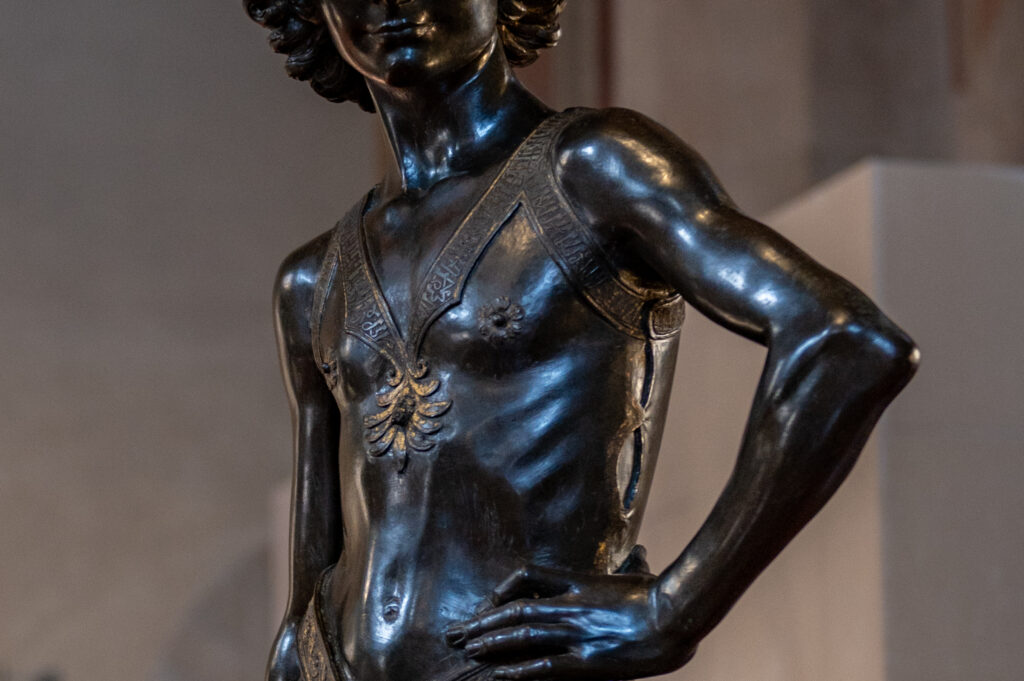
While Lorenzo had inherited his forefathers’ looks, he lacked their prowess in business and politics. He could very well charm with charisma and poetry, but in terms of making money, he was a veritable loser.
As is often the case with the third generation in a family business, under Lorenzo Il Magnifico the family business, the Medici bank, was ruined. He had given leading positions to relatives and sycophants, who drove the bank into ruin through either greed or incompetence, in most cases both. In 1494 the last outlet was closed down, as treasures were empty, and debts piled up high. To finance his patronage of artists, which was essential to hanging on to power, Lorenzo had shamelessly started stealing from friends, from relatives, from the state. Taxes were raised, and as unrest in the population grew, he heightened pressure and, to prevent conspiracies, he deployed secret spies. When an assassination attempt by a rivalling family failed (but killed his younger and better looking brother) Lorenzo had the assailers publicly executed, and by further tightening legislation cemented his powers to dictatorial extent. Macchiavelli later wrote about Lorenzo Il Magnifico that he managed the seemingly impossible deed of being at the first the first among equals and their king. Matter of factly, the Il Prinicipe was a tyrant.
Did the citizens of Florence still love Lorenzo or were they afraid? Hard to tell in a society that like the florin, like its religion, like its art, like its leader was two-faced. Marco Parenti, a contemporary silk merchant and amateur historian remarked: “So many men on the councils denounce the Medici over dinner time discussion at home at their villas, then vote as they’re told when they’re back in Florence.”
In his book “Medici Money” British writer Tim Parks identified this as a pivotal moment in history.“It seemed a new sort of personality was in the making,” he wrote, “that of a man who does not find it too much of a problem to be liberal and virtuous in private while toeing an authoritarian line public. And perhaps this had come about in response to a new kind of society where in public life would always involve a surrender of honesty, if only because the basis of power would always be suspect, always require a constant effort of propaganda to assert its legitimacy.” In this regard, too, did the Renaissance shape our modern understanding of politics.
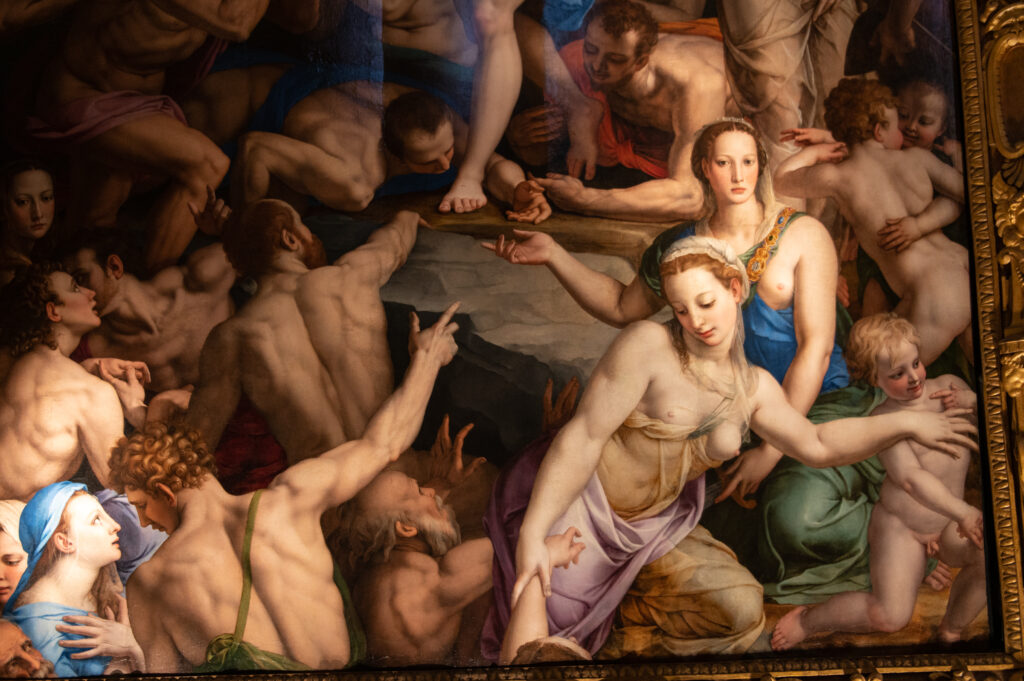
That people took up with the Medici, French writer Stendhal pointed out in his book A Journey from Milan to Reggio, was because he filled the city with beautiful things. Or was it because they couldn’t help it? Lorenzo subdued the Florentines’ love for liberty and hatred of nobility through the drug of aesthetic passion and pleasure. he wrote. And Stendhal must know. When he visited Florence in 1817, he was overwhelmed to the point of fainting.
I was in a sort of ecstasy, from the idea of being in Florence, close to the great men whose tombs I had seen. Absorbed in the contemplation of sublime beauty … I reached the point where one encounters celestial sensations … Everything spoke so vividly to my soul. Ah, if I could only forget. I had palpitations of the heart, what in Berlin they call ‘nerves’. Life was drained from me. I walked with the fear of falling.
In 1979, the Stendhal-syndrome – being overwhelmed by art became recognized as a psychosomatic condition. More recently, in 2018, a visitor reportedly had a heart attack when looking at Botticelli’s Venus in the Uffizi. The poor man obviously couldn’t stand this closeness to God. Or maybe, rather, it was the suffocating sensation of mass tourism. Half a millennium after Lorenzo’s genius scheme of emptying the state treasures to finance art, art is filling the state’s treasures. Even during a pandemic the Uffizi are crowded with visitors from around the world.
In 1492, the year the Medieval Ages officially came to an end, the Renaissance also came to a sudden, unexpected halt. Lorenzo Il Magnifico, crippled by the gout, died. His own sons, jeunesse dorée bestowed with little talent but a great sense of entitlement, were even less adapt at leading a state. They were at a loss when a Domenican priest with great charisma started preaching in Florence: Girolamo Savonarola. At last, there was one man the Medici could not buy.
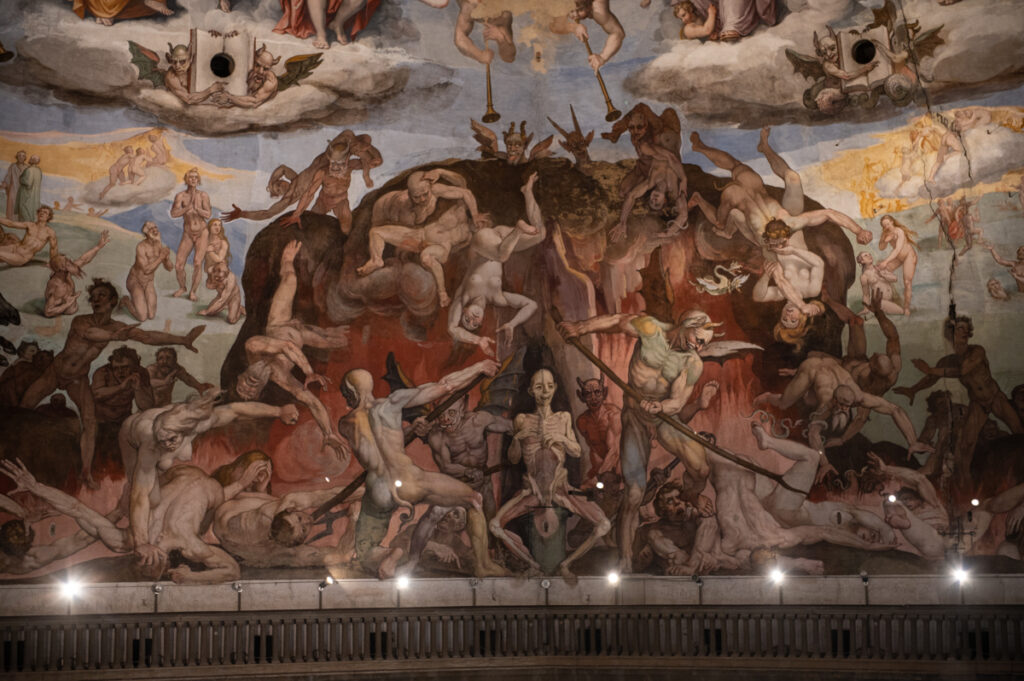
“You think you can buy everything with money? You pay master painters to depict your beloved selves, your sons and daughters as saints. Do you really believe the Virgin Mary went dressed the way you paint her? You do better to risk your life for Jesus Christ instead of amassing your riches or building your great palaces. “Savonarola was an ascetic religious extremist. In his sermons he predicted the end of the world brought about by the moral decline, but also by the blatant economic injustice between the gluttonous rich and the starving poor. His sermons were equally a kind of struggle of the classes, and it was likely more this socio-political aspect that drew the masses than his relogious fervor.
“The rich,” he declares, “claim that the poor have only to blame themselves for their miseries. They’re wrong. It’s the rich who exploit the poor and make them do bad, driving them to sickness and thievery and prostitution. You think wealthy people help pull the poor up with arms and private charities? Think again! The ambitious projects of the rich impovers the poor even more. Your great men buy land and shops from the poor at a low prize, taken advantage of others’ poverty to aggrandize themselves in vain shows of extravagance. The devil uses the great to oppress the poor so the poor can’t do good. “
With no Lorenzo Il Magnifico around to hold against him, the charismatic preacher found supporters in all layers of society. Spellbound by his eloquence, they followed his calls for ascetic life and puritanism. And so, in Florence, the Renaissance died.
It was of course the invading French army, not the Florentines, who toppled the Medici regime. Lorenzo the Magnifico had failed to build an army to protect the city, but had solely relied on his charms for protection. With the Medici out of the way, shrewd Savonarola persuaded the French to keep moving South to Naples and established his own republic, a sort of Catholic Mullah-state in Florence. His first action in power was to erect a great bonfire and burn everything that he deemed adverse to the pure Catholic faith, those that tempted one to sin: mirrors, cosmetics, fine dresses, playing cards, musical instruments and manuscripts of secular songs, and books and paintings and sculptures. Everything beautiful, for to Savanarola beauty was not a way to heaven, but to hell.
The Bonfire of The Vanities burned itself into the collective memory of the Florentines. Botticelli even, once a close friend of Lorenzo, now a follower of Savonarola, was rumoured to have thrown some of his paintings into the fire. While this has never been corroborated, he indeed went on to work for his new patron, Savonarola. Even Savonarola needed art to sell his sermons.
Two years later, though, Savonarola himself found his end on the bonfire. The Vatican had had it with his extremist views and had him executed on the exact spot of his Bonfire of the Vanities. As soon as Savonarola turned to ashes, the Medici returned. The Rinascita, and with it the regime of the Medici, was reborn.
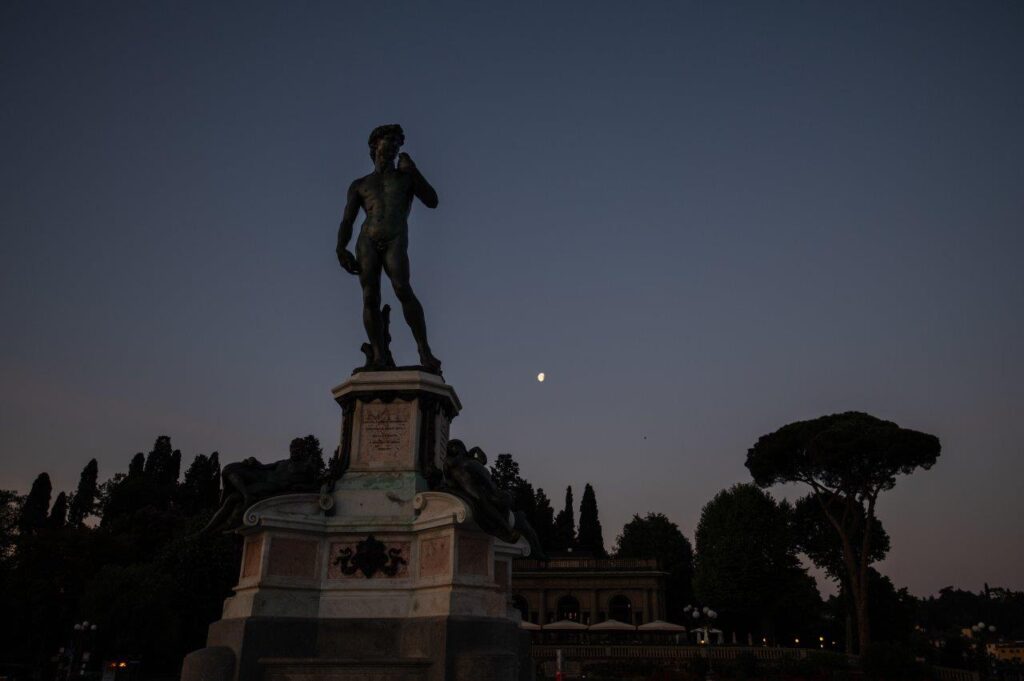
Sunrise at Piazziale Michelangelo

